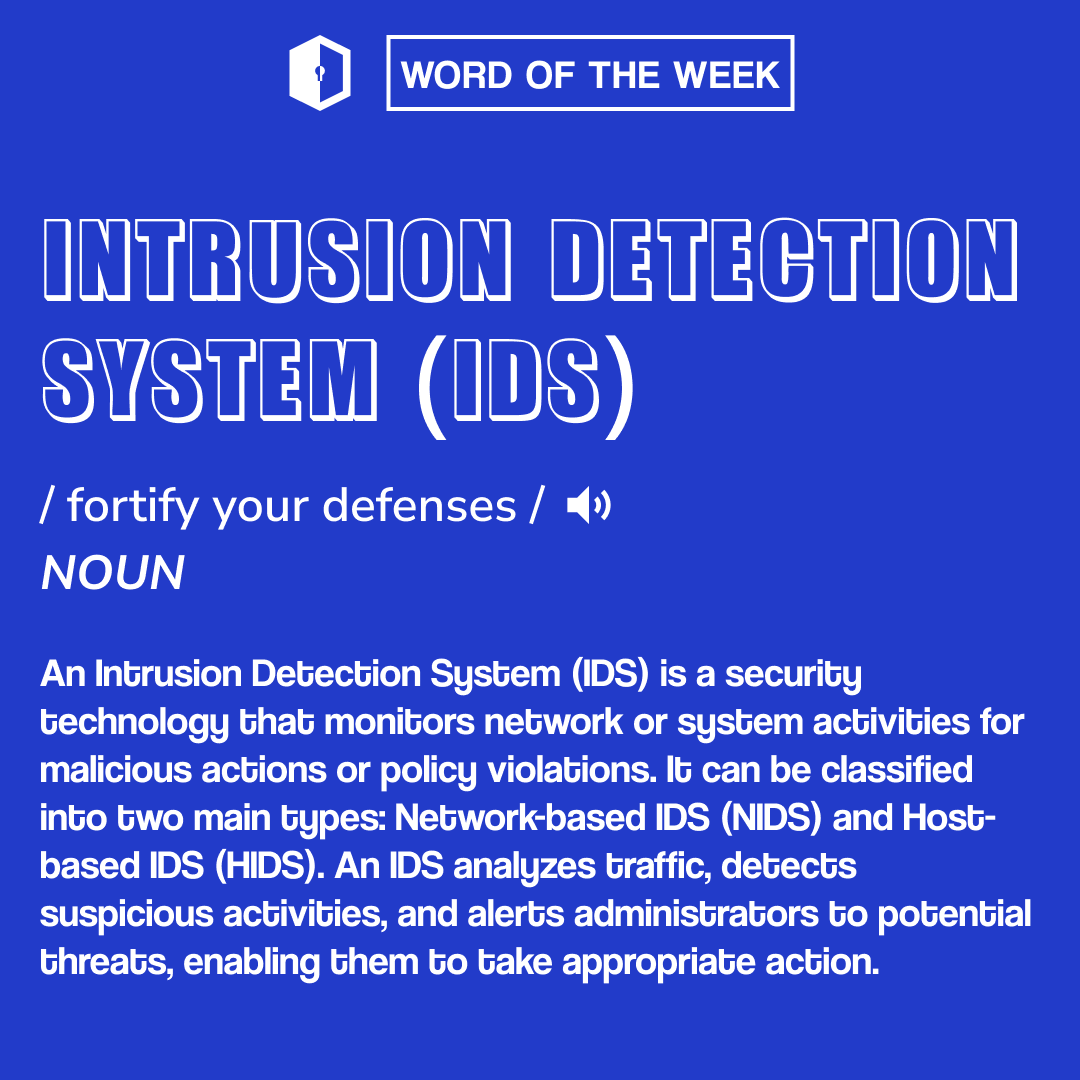🛡️ Cyber Security Word of the Week: Intrusion Detection System (IDS) 🛡️

A financial institution leveraged an IDS to detect unusual network activity indicative of a brute force attack. 🤯
The IDS alerted the security team, who quickly intervened, preventing the attackers from gaining access to sensitive customer data. This incident underscores the importance of having a robust IDS in place to detect and mitigate threats in real time.
🖥️ What is an Intrusion Detection System (IDS)?
An Intrusion Detection System (IDS) is a security technology that monitors network or system activities for malicious actions or policy violations. It can be classified into two main types: Network-based IDS (NIDS) and Host-based IDS (HIDS). An IDS analyzes traffic, detects suspicious activities, and alerts administrators to potential threats, enabling them to take appropriate action.
🚨 Why is an Intrusion Detection System (IDS) Critical?
An IDS is critical because it serves as an early warning system for potential security breaches. By continuously monitoring and analyzing network traffic, an IDS helps:
- Detect Attacks: Identify unauthorized access attempts and malicious activities.
- Prevent Damage: Alert administrators to threats before significant damage occurs.
- Enhance Incident Response: Provide valuable data for investigating and responding to security incidents.
- Ensure Compliance: Help meet regulatory requirements for security monitoring and reporting.
🛡️ How to Implement an Effective Intrusion Detection System (IDS)?
- Choose the Right IDS: Select between Network-based IDS (NIDS) and Host-based IDS (HIDS) based on your specific needs.
- Define Monitoring Scope: Determine which network segments or hosts need to be monitored.
- Regularly Update Signatures: Keep the IDS updated with the latest threat signatures to detect new and evolving threats.
- Fine-Tune Settings: Adjust IDS settings to minimize false positives and ensure accurate detection.
- Integrate with SIEM: Combine IDS with Security Information and Event Management (SIEM) systems for comprehensive threat analysis.
- Train Security Personnel: Ensure your security team is well-trained to interpret IDS alerts and respond effectively.
"Don’t let threats go undetected. Implement a robust Intrusion Detection System to monitor, detect, and respond to potential security breaches. Together, we can build a secure digital environment!"
Let’s enhance our security measures by integrating effective intrusion detection systems.
Stay tuned for more insights and tips in our Cyber Security Word of the Week series! 🌐🔒

